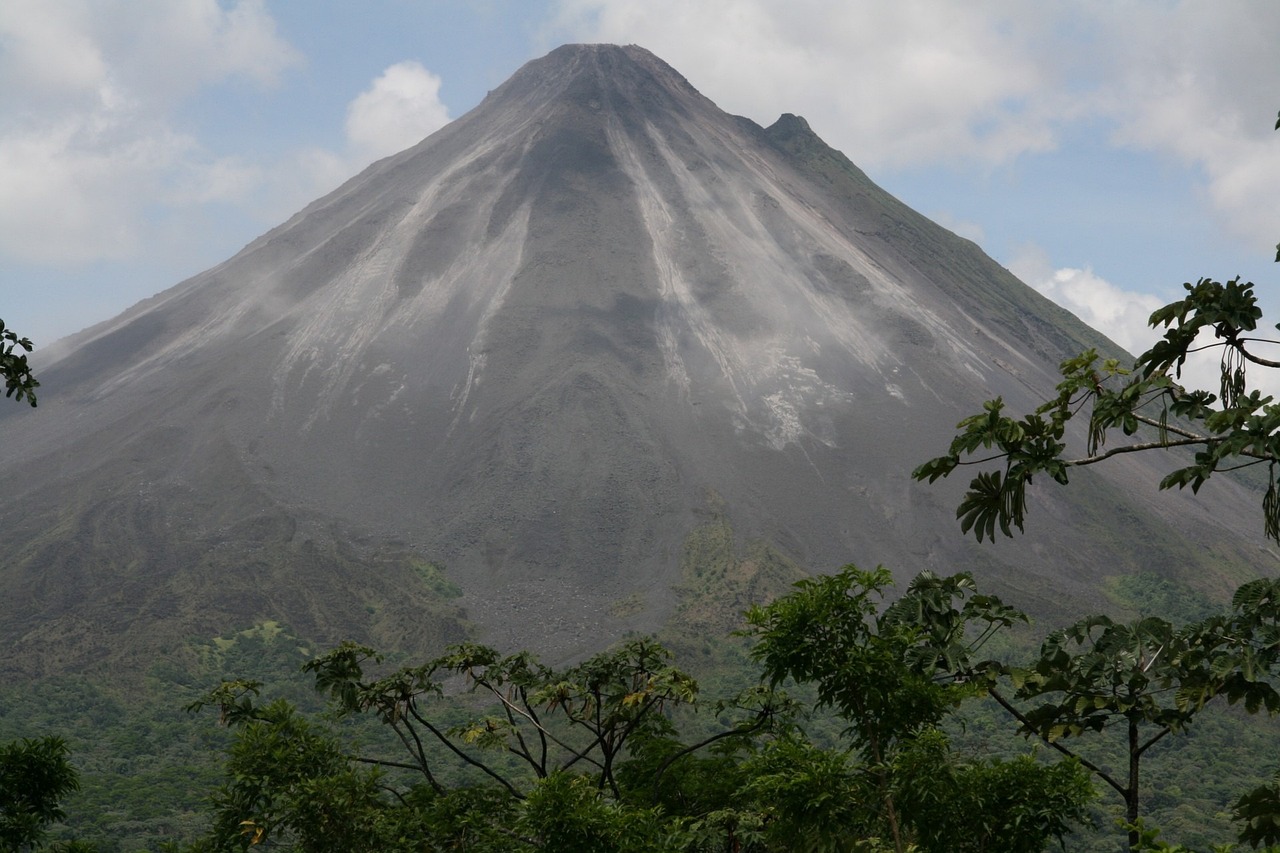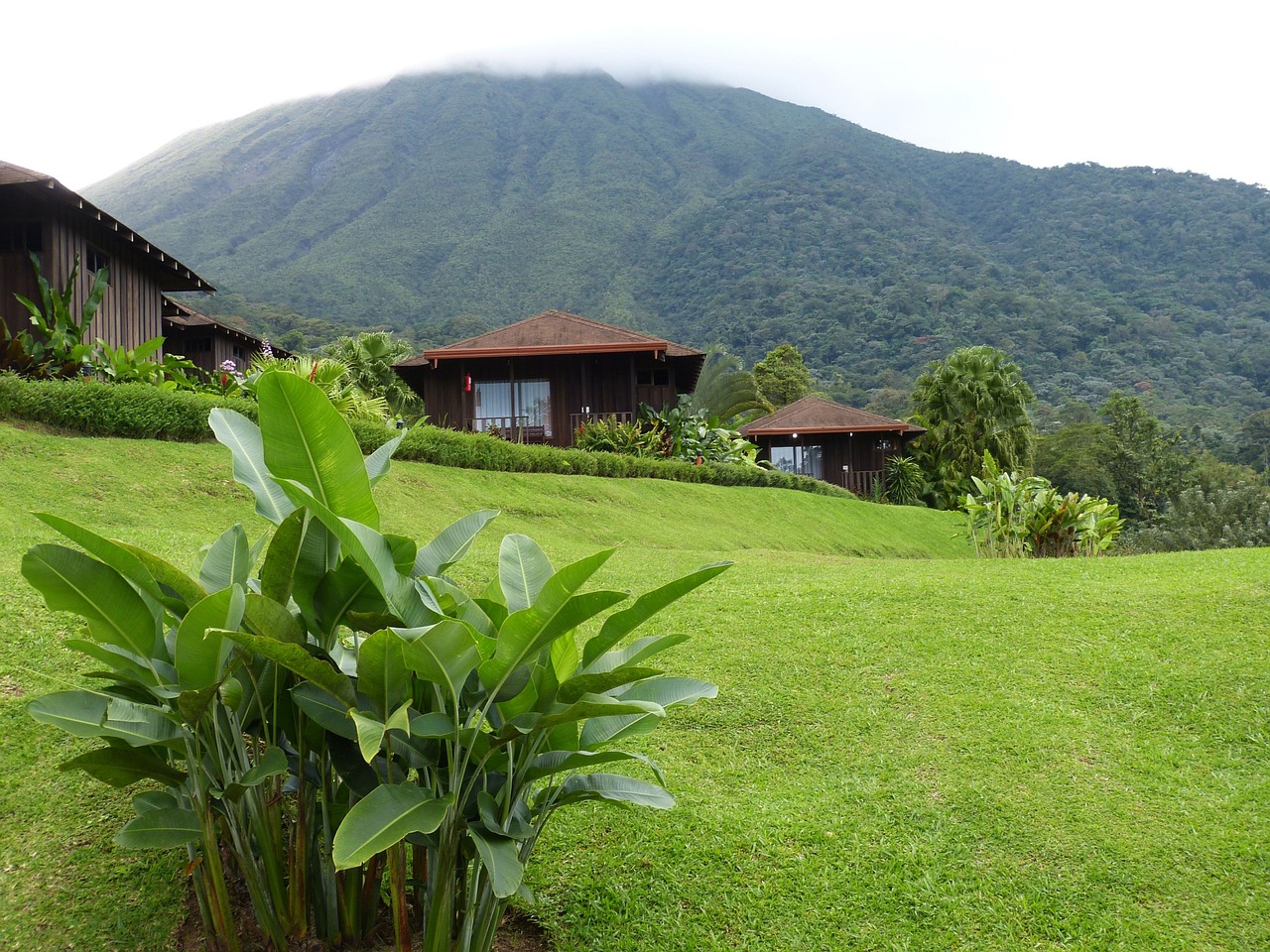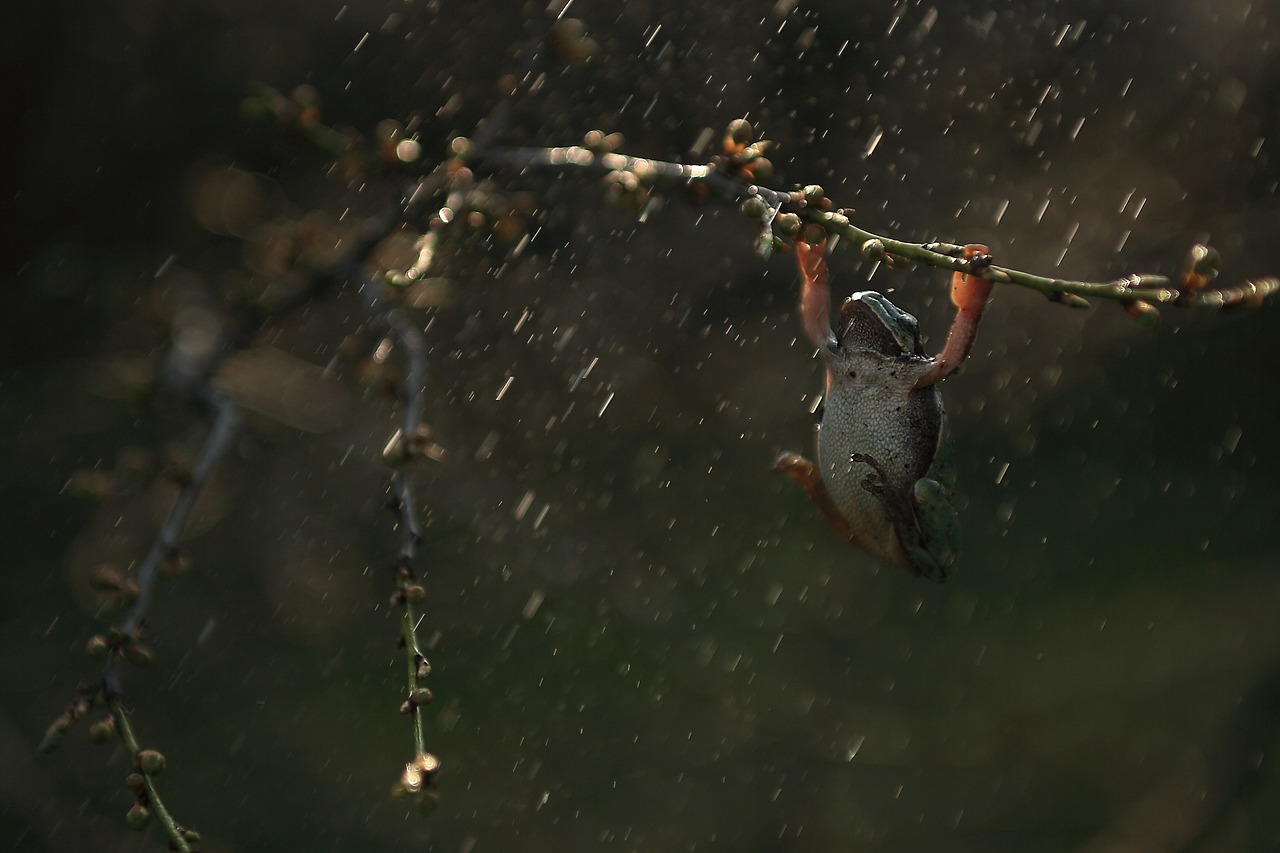Costa Rica Video
Weathering Costa Rica: Seasonal Changes and What to Expect
Costa Rica, known for its stunning biodiversity and breathtaking landscapes, experiences diverse weather patterns throughout the year. From tropical rainforests to sun-drenched beaches, this Central American country offers a variety of climates to explore. Understanding the seasonal changes and what to expect can help you plan your trip accordingly. In this article, we will delve into the different seasons in Costa Rica and provide detailed information about the weather patterns and activities to enjoy during each season.
Costa Rica Image 1:

Section 1: Dry Season (December to April)
The dry season in Costa Rica, which typically spans from December to April, is characterized by sunny days and minimal rainfall. This season is considered the peak tourist season due to the favorable weather conditions. The temperatures are generally warm, ranging from the mid-70s to the mid-90s Fahrenheit (mid-20s to mid-30s Celsius). It is the perfect time to explore the stunning beaches, indulge in water activities such as snorkeling and surfing, and embark on hiking adventures.
- Clear Skies: During the dry season, you can expect clear blue skies with minimal cloud cover, providing ample opportunities for outdoor activities and sightseeing.
- Beach Bliss: The dry season is ideal for beach lovers as the coastal areas experience little to no rainfall. You can bask in the sun, swim in the crystal-clear waters, and relax on the sandy shores.
- Abundant Wildlife: With the decrease in rainfall, wildlife becomes more concentrated around water sources, making it easier to spot a variety of species in national parks and reserves.
- Festivals and Events: The dry season coincides with various cultural festivals and events, such as the Fiestas de Palmares and the Envision Festival, offering a glimpse into the vibrant Costa Rican culture.
Section 2: Transition Period (May and November)
The transition periods in Costa Rica, which occur in May and November, mark the transition between the dry and rainy seasons. During these months, the weather can be unpredictable, with a mix of rain and sunshine. It is advisable to pack a combination of lightweight clothing and rain gear to be prepared for changing weather conditions.
- Intermittent Rainfall: The transition periods experience sporadic rainfall, interspersed with periods of sunshine. It is common to have short afternoon showers, followed by clear skies.
- Lush Greenery: These transition periods bring about abundant vegetation growth, resulting in lush green landscapes across the country.
- Less Crowded: As these periods are considered shoulder seasons, tourist crowds are relatively smaller, allowing for a more peaceful and intimate experience.
- Lower Accommodation Prices: Many hotels and resorts offer discounted rates during the transition periods, making it an ideal time for budget-conscious travelers.
Costa Rica Image 2:

Section 3: Rainy Season (May to November)
The rainy season in Costa Rica, also known as the “green season,” occurs from May to November. During this period, the country experiences increased rainfall, particularly in the afternoons and evenings. While the rainy season may deter some travelers, it offers its own unique charm and advantages.
- Lush Landscapes: The increased rainfall during the rainy season results in vibrant greenery and flourishing flora. The rainforests and cloud forests are at their most spectacular, providing breathtaking scenery.
- Less Crowded: The rainy season sees fewer tourists, allowing you to explore popular attractions and national parks with fewer crowds.
- Waterfall Spectacles: With the abundance of rainfall, waterfalls in Costa Rica are at their most majestic during the rainy season. Witness the cascading water in its full glory.
- Surfing and Rafting: The increased rainfall also brings about higher water levels, creating excellent conditions for activities like surfing and whitewater rafting.
Section 4: Mountainous Regions
Costa Rica’s mountainous regions, such as the Monteverde Cloud Forest and the Arenal Volcano area, have their own microclimates that differ from the coastal areas. The higher altitudes result in cooler temperatures and higher chances of rainfall throughout the year.
- Mild Temperatures: The mountainous regions offer cooler temperatures, with averages ranging from the 60s to the 70s Fahrenheit (15 to 25 degrees Celsius).
- Cloud Forest Experience: Explore the mystical cloud forests, where a unique ecosystem thrives. Witness the ethereal beauty of misty landscapes and diverse flora and fauna.
- Adventure Activities: The mountainous regions are perfect for adrenaline junkies. Engage in activities like ziplining, canyoning, and hiking to experience the thrill of these picturesque landscapes.
Costa Rica Image 3:

Section 5: Coastal Regions
Costa Rica’s coastal regions offer an array of experiences, from serene beaches to vibrant marine life. The weather patterns in these areas are influenced by the Pacific Ocean and the Caribbean Sea.
- Pacific Coast: The Pacific coastal regions, such as Guanacaste and Manuel Antonio, experience drier conditions during the dry season and occasional rainfall during the rainy season.
- Caribbean Coast: The Caribbean coast, including destinations like Puerto Viejo and Tortuguero, has a more tropical climate with higher chances of rainfall throughout the year.
- Beach Activities: The coastal regions offer a plethora of beach activities, including swimming, snorkeling, sunbathing, and surfing.
- Turtle Nesting: Visit the Caribbean coast during nesting season (July to October) to witness the incredible phenomenon of sea turtles coming ashore to lay their eggs.
Section 6: Central Valley
The Central Valley, where the capital city of San Jose is located, experiences a mild and temperate climate throughout the year. The region is surrounded by lush mountains and offers a mix of urban and natural attractions.
- Moderate Temperatures: The Central Valley enjoys pleasant temperatures, ranging from the 60s to the 80s Fahrenheit (15 to 30 degrees Celsius).
- Cultural Delights: Explore the vibrant city life of San Jose, visit museums, art galleries, and immerse yourself in the rich cultural heritage of Costa Rica.
- Volcano Excursions: Take a day trip to the Poas or Irazu volcanoes, where you can witness the impressive volcanic landscapes and stunning crater lakes.
- Coffee Plantations: The Central Valley is renowned for its coffee plantations. Take a tour to learn about the coffee-making process and indulge in aromatic brews.
Section 7: Northern Plains
The Northern Plains of Costa Rica, encompassing regions like Sarapiqui and La Fortuna, offer a mix of lush rainforests, active volcanoes, and abundant wildlife.
- Tropical Climate: The Northern Plains experience a tropical climate with warm temperatures throughout the year, ranging from the 70s to the 90s Fahrenheit (20 to 30 degrees Celsius).
- Volcanic Wonders: Explore the majestic Arenal Volcano, known for its perfect conical shape and occasional eruptions. Soak in natural hot springs for a relaxing experience.
- Wildlife Encounters: The rainforests of the Northern Plains are home to diverse wildlife, including monkeys, sloths, toucans, and colorful frogs. Embark on guided nature walks to spot these fascinating creatures.
- River Adventures: Enjoy thrilling river rafting experiences on the Sarapiqui and Toro rivers, surrounded by lush green landscapes and exotic flora.
Section 8: Southern Coast
The Southern Coast of Costa Rica boasts stunning beaches, dense rainforests, and abundant marine life. This region offers a mix of relaxation and adventure opportunities.
- Tropical Paradise: The Southern Coast enjoys a tropical climate with warm temperatures year-round, ranging from the 70s to the 90s Fahrenheit (20 to 30 degrees Celsius).
- Marine Biodiversity: Explore the underwater world through snorkeling or diving in the Marino Ballena National Park or the Corcovado National Park, where you can encounter a diverse range of marine species.
- Dolphin and Whale Watching: Take a boat tour to witness the majestic humpback whales and playful dolphins that frequent the waters of the Southern Coast.
- Surfing and Kayaking: The Southern Coast offers excellent surfing spots, such as Dominical and Pavones, known for their consistent waves. Kayaking in the mangroves is also a popular activity.
Section 9: Guanacaste Province
Guanacaste, located in the northwest of Costa Rica, is known for its stunning beaches, dry forests, and vibrant culture. The province experiences distinct weather patterns throughout the year.
- Dry Climate: Guanacaste has a dry and arid climate, with little rainfall throughout the year. The dry season is particularly long, lasting from November to May.
- Beach Paradise: Guanacaste is home to some of Costa Rica’s most beautiful beaches, including Tamarindo, Playa Conchal, and Playa Hermosa. Enjoy sunbathing, swimming, and water sports.
- Cultural Heritage: Explore the historic town of Liberia, known for its colonial architecture and rich cultural heritage.
- National Parks: Visit the Rincon de la Vieja National Park or the Santa Rosa National Park to experience the unique dry forest ecosystem and encounter wildlife like howler monkeys and coatis.
Section 10: Osa Peninsula
The Osa Peninsula, located on the southern Pacific coast of Costa Rica, is a haven for nature enthusiasts and wildlife lovers. This region is known for its pristine rainforests and untouched beauty.
- Tropical Rainforests: The Osa Peninsula is home to the famous Corcovado National Park, known for its incredible biodiversity. Explore dense rainforests, spot rare wildlife species, and hike along scenic trails.
- Remote and Secluded: The Osa Peninsula offers a more off-the-beaten-path experience due to its remote location. Immerse yourself in nature and enjoy the tranquility of this untouched paradise.
- Marine Conservation: The waters surrounding the Osa Peninsula are part of the Golfo Dulce, a protected marine area. Dive or snorkel to witness vibrant coral reefs and encounter marine species like sea turtles and dolphins.
- Surfing and Fishing: The Osa Peninsula offers excellent surfing breaks, such as Pavones, and is a popular destination for sport fishing, with opportunities to catch marlin, sailfish, and more.
Section 11: Caribbean Coast
The Caribbean coast of Costa Rica offers a unique blend of Afro-Caribbean culture, stunning beaches, and lush rainforests. The weather patterns in this region differ from the rest of the country.
- Tropical Climate: The Caribbean coast experiences a tropical climate with warm temperatures year-round, ranging from the 70s to the 90s Fahrenheit (20 to 30 degrees Celsius).
- Abundant Rainfall: Unlike the Pacific coast, the Caribbean coast receives rainfall throughout the year, with the highest precipitation occurring from September to November.
- Beach Bliss: The Caribbean coast is home to beautiful beaches, such as Puerto Viejo and Cahuita, where you can relax, swim, and enjoy the laid-back atmosphere.
- Cultural Fusion: Immerse yourself in the Afro-Caribbean culture of towns like Puerto Limon and experience vibrant music, delicious cuisine, and colorful traditions.
Section 12: References
– Visit Costa Rica: www.visitcostarica.com
– Lonely Planet: www.lonelyplanet.com
– Costa Rica Tourism Board: www.visitcostarica.com/ict
– National Geographic: www.nationalgeographic.com/travel/destinations/north-america/costa-rica/
– Rough Guides: www.roughguides.com/destinations/central-america-and-the-caribbean/costa-rica/


